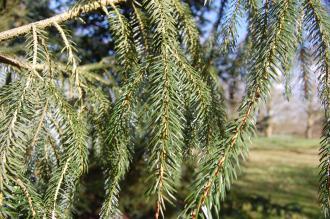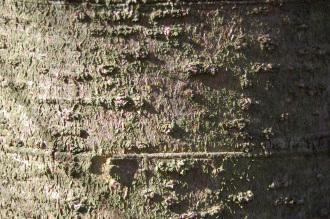
Picea brachytyla (01/03/2015, Kew Gardens, London)
Position: Full sun to partial shade
Flowering period: Spring
Soil: Moist, well drained
Eventual Height: 40m
Eventual Spread: 15m
Hardiness: 8a, 8b, 9a, 9b, 10a
Family: Pinaceae
Picea brachytyla is a large coniferous evergreen tree with a cylindrical to irregular habit as it matures. Its dark green leaves are needle like, flattened, up to 2.5cm long and 1.5mm broad. Its trunk may achieve a diameter of up to 1m. Its grey/ brown bark is fissured with square plates and flaking. Its male flowers are in the form of pollen cones. Its female fruit are ovoid/ oblong pendulous cones, initially green, maturing to dull brown, up to 10cm long and 4cm across.

Picea brachytyla Leaf (01/03/2015, Kew Gardens, London)
Picea brachytyla, commonly known as Sargent Spruce, is native to south west China. In its native habitat it grows in evergreen woodland on moist mountain slopes in coniferous forests at an altitude of 1300m to 3800m. This tree is listed as Vulnerable according to the IUCN Red List of Threatened Species.
The etymological root of the binomial name Picea is derived from the Latin Pix meaning ‘pitch or tar’ in reference to the Spruce trees resin. Brachytyla is derived from the Greek braxus meaning ‘short’ and tylos meaning ‘swelling’.

Picea brachytyla Bark (01/03/2015, Kew Gardens, London)
When available the landscape architect may find Picea brachytyla useful as an upright evergreen coniferous specimen tree suitable for wet climates. It will not tolerate atmospheric pollution.
Ecologically, Picea brachytyla seeds are attractive to some birds.
Picea brachytyla prefers moist, humus rich, well-drained soils. It prefers an acid to neutral pH of soil. It dislikes dry soils.
Picea brachytyla requires little maintenance.

